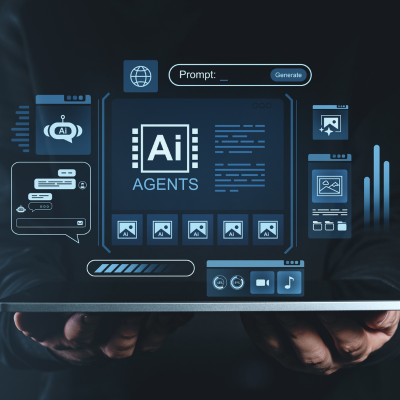Digital twins in finance are reshaping how financial institutions simulate markets, test strategies, and make decisions under uncertainty. By creating virtual replicas of financial systems, assets, and portfolios, digital twins enable real-time scenario testing that transcends traditional predictive models. Unlike static simulations, these dynamic systems integrate live market data, customer behaviors, and operational variables into continuously updated models powered by artificial intelligence. For banks, investment firms, and financial service providers navigating increasingly complex markets, digital twins offer a competitive edge by transforming risk management, accelerating product development, and optimizing operations with precision previously unattainable.
From Theory to Practice: How Digital Twins Differ from Traditional Models
The evolution of digital twins in finance represents a fundamental shift in how institutions approach decision-making. Traditional simulation models, such as Monte Carlo simulations, rely on historical data and probabilistic sampling to forecast outcomes. While valuable, these approaches remain static, unable to adapt as market conditions change. Digital twins take simulation to the next level by incorporating live data streams and machine learning algorithms. This means the virtual model continuously updates, providing a real-time reflection of its physical counterpart.
A bank’s digital twin of its trading portfolio, for instance, instantly reflects new market prices, customer transactions, and regulatory changes, enabling treasurers and risk managers to test strategies against actual conditions rather than historical assumptions. The practical difference is substantial. Where traditional models might require days to run comprehensive stress tests, digital twins powered by AI can execute thousands of scenarios in minutes. This speed, combined with accuracy, transforms risk forecasting from a periodic exercise into an ongoing capability.
Core Applications Driving Adoption Across Banking
Financial institutions are deploying digital twins across multiple functions, each delivering measurable value.
Customer Experience and Revenue Growth
Banks are shifting from demographic segmentation to behavioral micro-models that evolve with every customer interaction. These customer digital twins ingest transaction data, biometric information, and contextual signals to predict next-best offers, proactively reduce churn, and identify fraudulent patterns. A Southeast Asian universal bank reduced product development cycles by testing prototypes inside simulated customer journeys rather than conducting costly in-branch pilots, achieving board approval for three new savings products in under six weeks. North American card issuers pair customer twins with reinforcement learning engines to recalibrate credit limits in real time, mitigating write-off risk during market volatility. This personalization-driven approach places customer-centric digital twins at the forefront of revenue generation initiatives.
Operational Efficiency and Cost Reduction
Finance departments are digitizing month-end routines that once stretched across dozens of spreadsheets. Siemens’ Global Finance Board built an internal data-twin layer synchronizing 200 disparate ledgers, giving executives a single version of truth and slashing manual allocations by 30%. Generative AI templates now plug directly into enterprise resource planning sub-ledgers, allowing treasurers to model working capital scenarios in minutes rather than days. For smaller lenders unable to underwrite large capital expenditures, digital twin as a service bundles offer an alternative, bypassing expensive hardware refresh cycles. Given ongoing pressure from equity analysts to trim cost-income ratios, OPEX savings from digital twins remain a central catalyst for market adoption.
Digital Twins in Finance
Digital twins of cash reserves, ATM networks, and liquidity positions enable banks to forecast demand, optimize cash distribution, and reduce idle capital. This ensures optimal liquidity while lowering operational costs, a critical capability during market stress or economic uncertainty.
Risk Modeling and Compliance
Financial institutions leverage digital twins to simulate regulatory changes, stress test systems against various risk scenarios, and model complex risk dependencies. This strengthens cybersecurity measures and regulatory compliance, reducing the likelihood of costly breaches or violations. By running simulations on tokenized data, institutions can reduce exposure to personally identifiable information while accelerating regulatory approval processes.
Building a Successful Digital Twin Initiative: Practical Steps
Implementing digital twins requires more than technology; it demands organizational alignment and strategic sequencing.
Start with High-Impact Pilots
Rather than pursuing enterprise-wide implementation immediately, successful institutions begin with focused pilots. A controller might pilot a single process twin, such as accounts receivable automation, to demonstrate value before scaling. This incremental approach builds internal confidence and surfaces practical challenges early.
Break Down Data Silos
Digital twins thrive on integrated data. Organizations must aggregate financial, operational, and nonfinancial datasets to enable comprehensive twins that reflect the full enterprise ecosystem. This requires collaboration between finance, IT, risk, and front-office teams to align data definitions and quality standards.
Invest in Data Quality and Real-Time Infrastructure
The accuracy of digital twins depends entirely on input data quality. Organizations must ensure their data infrastructure supports real-time, accurate feeds. Legacy systems often struggle with latency or incomplete data; upgrading these systems is foundational to success.
Embed AI-Powered Learning
Incorporate machine learning modules that continuously learn and optimize simulations. Reinforcement learning algorithms allow systems to improve their outputs over time, adapting to evolving market conditions and generating increasingly accurate forecasts.
Prioritize User-Friendly Interfaces
Simulation tools must be accessible to decision-makers without requiring deep technical expertise. Intuitive dashboards and scenario exploration interfaces democratize access to insights, enabling CFOs, controllers, and business unit leaders to run their own analyses.
Overcoming Adoption Barriers
Despite clear benefits, many organizations move slowly on digital twins. The hesitation stems not from doubts about usefulness but from practical barriers. Siloed systems and data latency remain common obstacles. Cultural resistance to automation also plays a role; employees may fear that process twins threaten their roles. Controllers and finance leaders must champion incremental wins and educate stakeholders on how digital twins augment rather than replace human judgment. Additionally, many finance professionals lack familiarity with digital twin concepts and implementation best practices. Upskilling teams through industry-focused education accelerates adoption. Practical training that covers digital twins alongside AI and financial analytics prepares professionals to implement these technologies effectively in their organizations.
Real-World Impact: How Leading Banks Deploy Digital Twins
Major financial institutions are realizing tangible benefits from digital twin investments. JPMorgan Chase has implemented digital twins to simulate market conditions and optimize trading strategies. Facing challenges of market volatility and regulatory complexity, the bank developed a digital twin of its trading portfolio integrated with real-time market data and AI-driven predictive analytics. Within the first year, the bank improved risk-adjusted returns by 15%, reduced compliance breaches by 20%, and enhanced decision-making speed during market shocks. Other leaders like HSBC, DBS Bank, and Standard Chartered are experimenting with digital twins to monitor operations, improve risk management, optimize branch networks, and elevate customer experiences. These institutions recognize that digital twins in finance are no longer experimental; they are becoming essential infrastructure for competitive advantage.
Measuring Success: Metrics That Matter
Success with digital twins should be tracked across multiple dimensions. Improved forecast accuracy—measured by reduced variance between predicted and actual outcomes—indicates model quality. Risk reduction, evidenced by fewer unexpected losses or regulatory violations, demonstrates operational resilience. Efficiency gains, such as reduced month-end close cycles or faster scenario analysis, translate directly to cost savings. Revenue impact through optimized product offerings and customer targeting shows business value. Finally, progress on ESG metrics enabled by scenario modeling reflects alignment with sustainability goals. Analytics dashboards powered by digital twins provide continuous feedback loops, allowing finance teams to refine models and strategies for sustained value creation.
Preparing for the Future: Building Expertise in Digital Twins
As digital twins become central to financial decision-making, finance professionals must develop expertise in this domain. Organizations that invest in employee development gain competitive advantage. Comprehensive training programs that blend theory with real-world case studies and hands-on practice prepare teams to implement digital twins effectively. Leading educational programs now integrate digital twins and AI into investment banking and financial analytics curricula. These courses combine faculty expertise with industry partnerships and internship opportunities, providing students and professionals direct exposure to cutting-edge tools and market realities. This practical, industry-led approach bridges the gap between academic concepts and workplace application, creating a direct pathway from learning to implementation.
Conclusion
Digital twins in finance represent a transformative leap in how markets are simulated, risks forecasted, and decisions made. By combining real-time data, AI modeling, and sophisticated simulation capabilities, digital twins empower financial institutions to navigate complexity with confidence. The institutions leading adoption—from JPMorgan Chase to regional banks—are already capturing measurable benefits in risk management, operational efficiency, and customer experience. For finance professionals aiming to master this technology, developing expertise in digital twins and AI-powered financial analytics is essential. Organizations that build this capability today will be positioned to lead in an increasingly complex financial landscape tomorrow. The convergence of digital twins in finance, artificial intelligence, and real-time data analytics is not a distant future; it is reshaping banking and finance right now.
FAQs
Q: What exactly is a digital twin in finance?
A digital twin in finance is a virtual replica of a financial system, portfolio, or business process that integrates real-time data and AI to simulate scenarios, forecast outcomes, and test strategies dynamically.
Q: How does AI modeling improve digital twins?
AI modeling enables continuous learning, adaptive simulations, and rapid scenario analysis. Machine learning algorithms improve accuracy over time and allow digital twins to adjust to evolving market conditions, enhancing predictive capabilities.
Q: What role do digital twins play in risk forecasting?
Digital twins model complex risk dependencies and simulate various market and operational scenarios, providing deep insights into potential vulnerabilities, regulatory compliance challenges, and stress-test outcomes.
Q: How are digital twins transforming banking operations?
Digital twins optimize both front-office customer interactions and back-office processes, increasing efficiency, enabling personalization, improving regulatory compliance, and accelerating product development cycles.
Q: Can digital twins improve investment forecasting models?
Yes, digital twins integrate diverse data sources and simulate multiple outcomes simultaneously, enabling more precise investment forecasts and scenario planning than traditional predictive models.
Q: What are the main barriers to adopting digital twins?
Common barriers include siloed data systems, data latency, cultural resistance to automation, and lack of employee expertise. Overcoming these requires incremental pilots, data integration efforts, change management, and targeted training.









